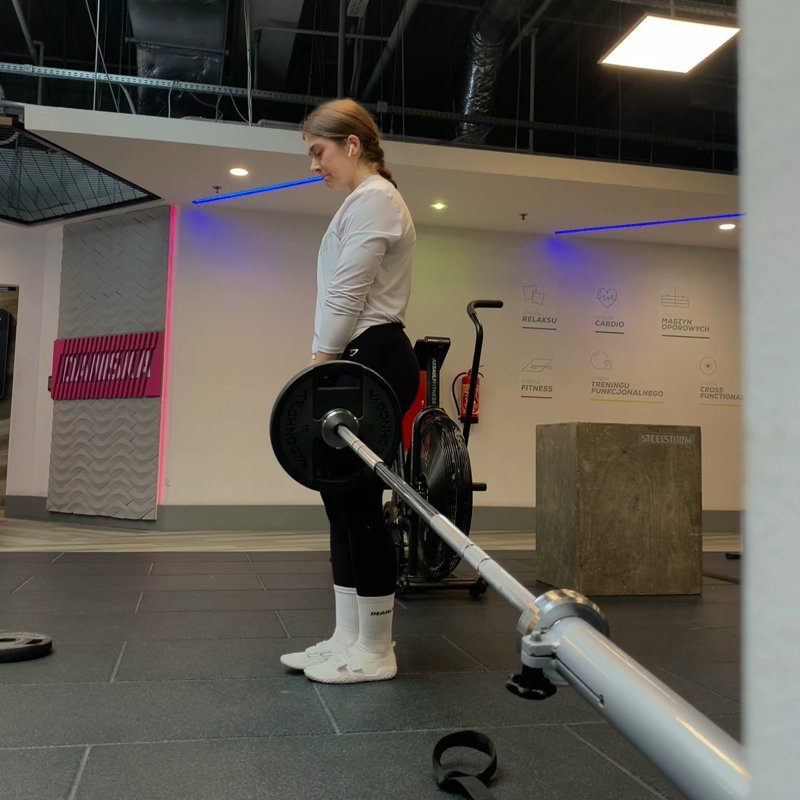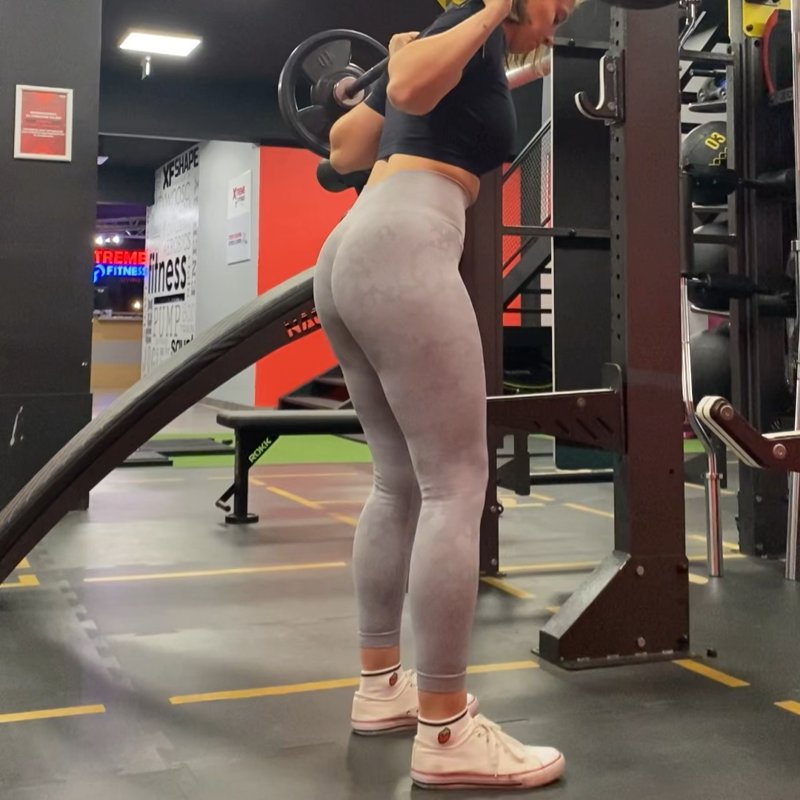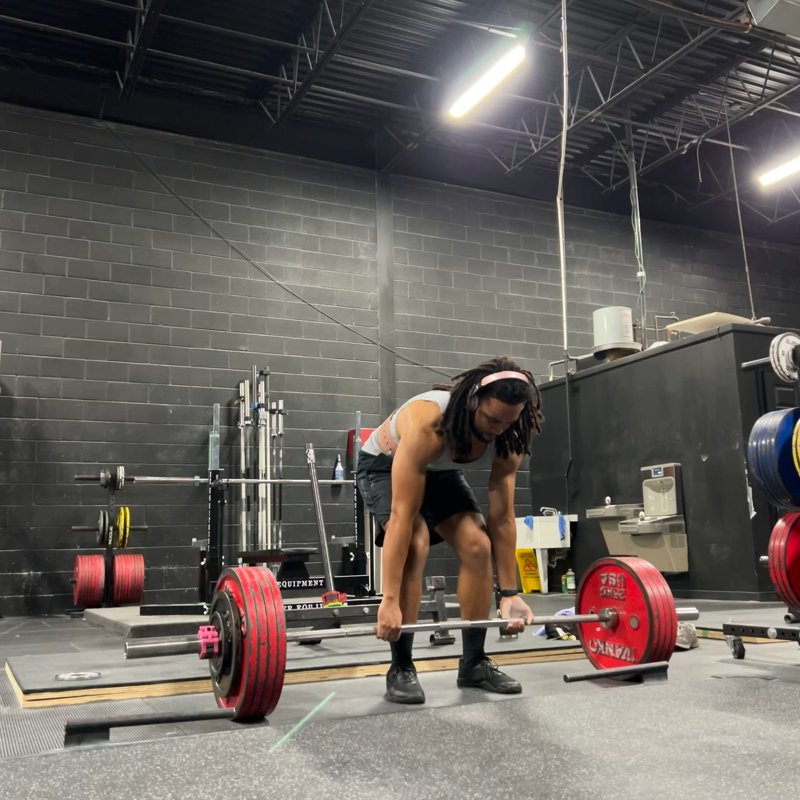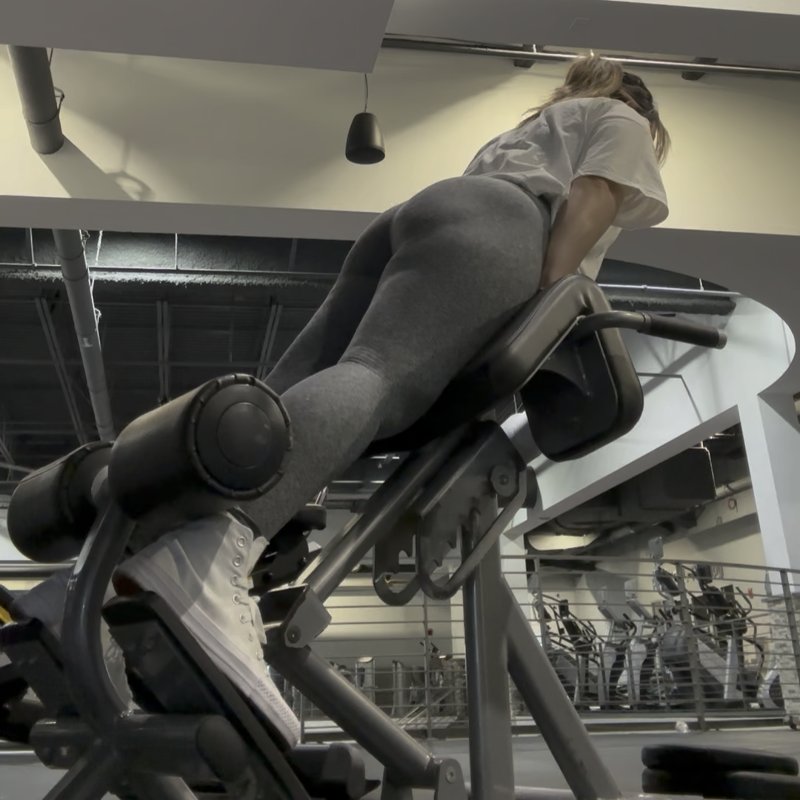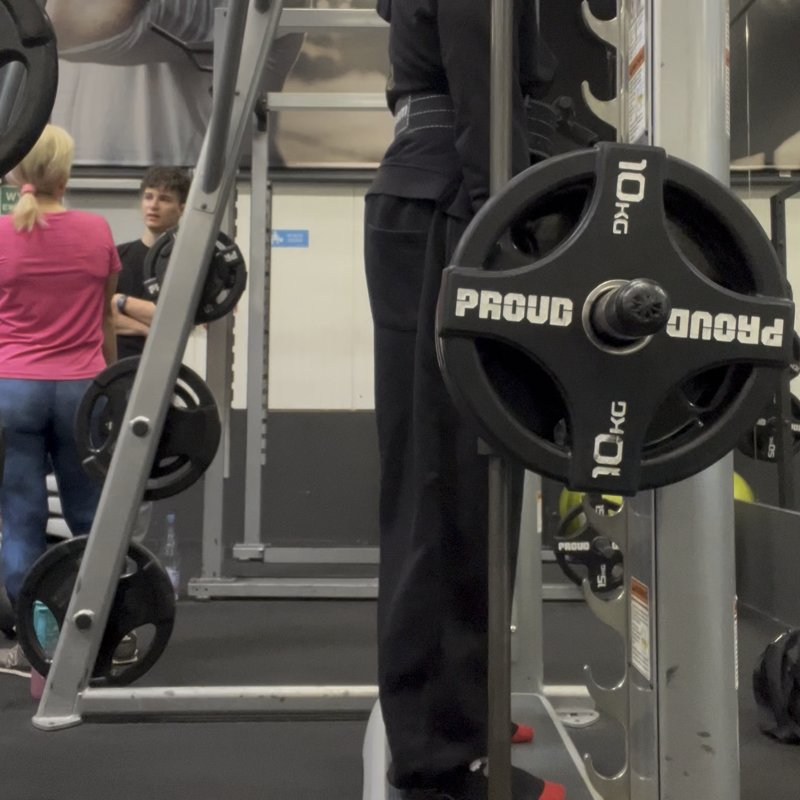Dumbbell RDL: The Ultimate Guide
The Dumbbell Romanian Deadlift (RDL) is a hip hinge movement that primarily targets the hamstrings, glutes, and lower back while maintaining a relatively fixed knee position, making it excellent for posterior chain development.
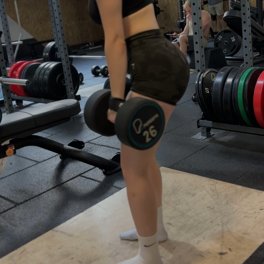
Quick Facts
Key Benefit
Hamstring and glute development with reduced lower back stress
Primary Muscles
Erector Spinae, Glutes, Hamstrings
Secondary Muscles
Abdominals, Calves, Forearms, Hip Adductors, Lats, Traps
Equipment
dumbbells
Difficulty
Beginner
Type
Compound
In This Guide
Ready to master the Dumbbell RDL?
Track your progress, see improvements over time, and build strength consistently.
Download GravitusThe Dumbbell Romanian Deadlift (RDL) is one of the most effective exercises for developing the posterior chain—the powerful muscle group running along the backside of your body. This movement primarily targets the hamstrings, glutes, and lower back through a hip hinge pattern that emphasizes the eccentric (lowering) phase of the movement. Unlike conventional deadlifts that begin from the floor, the RDL starts from a standing position and focuses on hip flexion and extension while maintaining a relatively fixed knee position. This mechanical difference shifts emphasis to the hamstrings and glutes while reducing quad involvement. The dumbbell variation offers several advantages over its barbell counterpart, including a more natural range of motion, reduced lower back stress due to the load being positioned closer to your center of gravity, and the ability to identify and address strength imbalances between sides. Whether your goal is to build stronger, more defined hamstrings and glutes, improve hip mobility and function, enhance performance in other lifts, or develop resilience against lower back injuries, the Dumbbell RDL delivers exceptional results when performed with proper technique and programming.
Benefits of Dumbbell Romanian Deadlifts
The Dumbbell RDL offers several unique advantages compared to other posterior chain exercises.
Hamstring Development
Directly targets the hamstrings through a full eccentric stretch and concentric contraction, promoting both strength and hypertrophy in this often-underdeveloped muscle group.
Glute Activation
Powerfully engages the gluteus maximus during the hip extension phase, contributing to improved hip strength and aesthetics.
Hip Hinge Mastery
Teaches proper hip hinge mechanics, a fundamental movement pattern essential for athletic performance and injury prevention in daily activities.
Lower Back Health
Strengthens the spinal erectors and teaches proper spinal position under load, potentially reducing the risk of lower back injuries when performed correctly.
Grip Strength Enhancement
Challenges your grip as you hold the dumbbells throughout the movement, developing forearm and grip strength as a beneficial side effect.
Bilateral Balance
Using independent dumbbells helps identify and address strength or mobility imbalances between the left and right sides of the body.
Proper Form & Technique
Setup
- Select appropriate dumbbells that challenge you but allow for proper form throughout the movement.
- Stand with feet hip-width to shoulder-width apart, creating a stable base.
- Hold a dumbbell in each hand with arms fully extended, positioned in front of your thighs.
- Adopt a neutral grip with palms facing your body.
- Set your shoulders by pulling them back and down, creating a proud chest position.
- Engage your core by bracing as if preparing to take a punch.
- Distribute your weight evenly across your entire foot, with a slight emphasis on the heels.
- Maintain a neutral spine position with natural curves in the cervical, thoracic, and lumbar regions.
- Position your head in a neutral alignment with your spine, gaze directed about 6-8 feet in front of you.
Descent
- Begin by taking a deep breath into your diaphragm and bracing your core.
- Initiate the movement by pushing your hips backward while maintaining a slight bend in the knees.
- Keep your chest up and shoulders back as you hinge forward at the hips.
- Allow the dumbbells to travel close to the front of your legs throughout the movement.
- Continue the controlled descent until you feel a significant stretch in your hamstrings.
- For most people, this occurs when the torso is roughly parallel to the ground or slightly above.
- Maintain a neutral spine throughout—avoid rounding or excessive arching of the lower back.
- Keep your neck aligned with your spine rather than looking up or down excessively.
- The end range is determined by your hamstring flexibility, not by a predetermined position.
Ascent
- Maintain your braced core and neutral spine at the bottom position.
- Initiate the ascent by driving your hips forward, engaging your glutes and hamstrings.
- Push through your mid-foot and heels rather than the balls of your feet.
- Keep the dumbbells close to your body, following the same path as during the descent.
- Maintain tension in your hamstrings and glutes throughout the upward movement.
- Return to a fully upright position by squeezing your glutes at the top.
- Exhale as you complete the hip extension.
- Reset your position briefly at the top before beginning the next repetition.
- Repeat for the desired number of repetitions, maintaining quality movement patterns.
Key Form Tips
Hip Hinge
Focus on pushing your hips backward rather than squatting down—the movement should feel like closing a door with your rear end.
Spinal Position
Maintain a neutral spine throughout the entire movement, avoiding rounding or excessive arching of the lower back.
Range of Motion
Lower to a depth dictated by your hamstring flexibility while maintaining proper form, rather than forcing a predetermined range.
Bar Path
Keep the dumbbells close to your body throughout the movement, essentially dragging them along your legs.
Knee Position
Maintain a slight, consistent bend in the knees throughout—they should neither straighten nor bend significantly during the movement.
Muscles Worked
Primary Muscles
- Hamstrings: The three muscles at the back of the thigh (semitendinosus, semimembranosus, and biceps femoris) are the primary targets, working eccentrically during the descent and concentrically during the ascent.
- glutes: The largest muscle in the buttocks works powerfully during the hip extension phase to return the body to the upright position.
- Erector Spinae: The muscles running along the spine work isometrically to maintain a neutral spine position throughout the movement.
Secondary Muscles
- hip adductors: The inner thigh muscles assist in stabilizing the hip joint throughout the movement, particularly the adductor magnus which has hamstring-like functions.
- traps: The upper back muscles work isometrically to maintain proper shoulder position and protect the spine.
- lats: The large back muscles help keep the dumbbells close to the body and contribute to overall back stability.
- forearms: The gripping muscles of the forearm work isometrically to maintain hold on the dumbbells throughout the exercise.
- abdominals: The abdominals, obliques, and transverse abdominis brace to stabilize the spine throughout the movement.
- Calves: The gastrocnemius and soleus provide ankle stability throughout the movement, particularly when emphasizing heel pressure.
Common Mistakes and How to Fix Them
Rounding the Lower Back
Allowing the lumbar spine to flex during the movement increases injury risk and reduces hamstring engagement. Maintain a neutral spine position by hinging properly at the hips rather than bending at the waist. Focus on keeping your chest up and shoulders back throughout the movement. If you cannot reach a deeper position without lower back rounding, limit your range of motion until hamstring flexibility improves. Practice the hip hinge pattern without weight until the movement feels natural. Consider using the "wall touch" drill—standing 6-8 inches from a wall and practicing touching the wall with your buttocks while maintaining a neutral spine—to reinforce proper hip hinge mechanics.
Insufficient Hip Hinge
Turning the movement into a squat by bending the knees excessively rather than pushing the hips back. Focus on initiating the movement by pushing your hips backward while maintaining only a slight bend in the knees. Think of the movement as "hinging" rather than "squatting." Visualize trying to close a door behind you with your buttocks, which encourages the proper posterior weight shift. If the hip hinge pattern is challenging, practice with bodyweight only, using tactile cues like placing your hands on the crease of your hips to feel the proper folding pattern. The RDL should primarily challenge your hamstrings and glutes, not your quadriceps.
Lowering Too Far
Forcing depth beyond the point where form breaks down compromises safety and effectiveness. Lower only as far as your hamstring flexibility allows while maintaining a neutral spine. The end range should be determined by the point where you feel a significant stretch in your hamstrings, not by trying to reach a predetermined height. For most people, this occurs when the torso is roughly parallel to the floor or slightly higher. As flexibility improves over time, your functional range of motion will naturally increase. Focus on quality of movement rather than quantity of range.
Looking Up or Down
Improper neck position during the movement can lead to cervical strain and compromise overall spinal alignment. Maintain a neutral neck position by keeping your gaze directed about 6-8 feet in front of you on the floor. Avoid the tendency to look up toward a mirror or down at your feet during the movement. Think of your neck as an extension of your thoracic spine, maintaining the same neutral curve throughout. Some find it helpful to imagine holding an orange under their chin to prevent excessive neck movement. This alignment helps ensure the entire spine—from cervical to lumbar—maintains its optimal position under load.
Using Momentum
Bouncing or using momentum at the bottom position reduces hamstring engagement and increases injury risk. Control both the eccentric (lowering) and concentric (lifting) portions of the exercise. Implement a deliberate tempo—for example, 3 seconds down, brief pause at the bottom, 2 seconds up—to eliminate momentum and maximize muscle tension. Select a weight that allows you to perform the movement strictly without requiring momentum. Consider temporarily using slightly lighter weights with perfect form to reinforce proper movement patterns. The RDL derives much of its benefit from the controlled eccentric phase, so avoid rushing this portion especially.
Shrugging the Shoulders
Allowing the shoulders to roll forward or rise toward the ears during the movement. Maintain proper upper back engagement by setting your shoulders before beginning—pull them back and down, creating a "proud chest" position. Maintain this shoulder position throughout the entire exercise. Think about keeping your shoulder blades in your back pockets. If maintaining proper shoulder position is challenging, it may indicate that the weight is too heavy or that additional upper back strengthening is needed. Consider incorporating exercises like face pulls and band pull-aparts to improve upper back strength and positional awareness.
Exercise Variations
Stance Variations
-

Wide Stance Dumbbell RDL
Using a stance wider than shoulder width to place greater emphasis on the inner hamstrings and adductors.
-
Staggered Stance Dumbbell RDL
Positioning one foot slightly in front of the other to create different loading patterns across the posterior chain.
-
Dumbbell Single Leg RDL
Performing the movement on one leg at a time to increase stability challenges, address imbalances, and intensify the work on each leg individually.
Grip Variations
-

Offset-Grip Dumbbell RDL
Holding one heavier dumbbell and one lighter (or none) to create anti-rotational demands on the core while still training the hip hinge pattern.
-

Suitcase Dumbbell RDL
Holding a dumbbell in just one hand at the side while performing the hip hinge, creating significant lateral stabilization demands.
-

Snatch-Grip Dumbbell RDL
Holding the dumbbells with a wider grip position to increase range of motion and upper back engagement during the movement.
Technical Variations
-
Tempo Dumbbell RDL
Manipulating the speed of different phases of the movement, such as a very slow 4-5 second eccentric phase to increase time under tension.
-
Deficit Dumbbell RDL
Performing the exercise while standing on a small platform to increase range of motion and hamstring stretch for advanced trainees.
-
Paused Dumbbell RDL
Adding a 2-3 second pause at the bottom position to eliminate momentum and increase time under tension in the stretched position.
-

Constant-Tension Dumbbell RDL
Performing the movement without fully standing upright between repetitions, maintaining constant tension on the hamstrings throughout the set.
Frequently Asked Questions
The optimal depth for Dumbbell RDLs is highly individual and should be determined by your hamstring flexibility and ability to maintain proper form, not by a predetermined position. The key indicator is feeling a significant stretch in your hamstrings while still maintaining a neutral spine position. For most people, this occurs when the torso is roughly parallel to the floor or slightly higher, with the dumbbells reaching approximately mid-shin level. However, this can vary based on your limb proportions, flexibility, and training experience. Rather than focusing on reaching a specific depth, concentrate on these quality indicators: (1) maintaining a neutral spine throughout the movement—if your lower back begins to round, you've gone too far; (2) feeling tension in the hamstrings, not the lower back; (3) keeping the movement as a hip hinge rather than turning it into a squat; and (4) ensuring the dumbbells remain close to your body throughout the movement. As your hamstring flexibility improves over time with consistent practice, your functional range of motion will naturally increase. Remember that a properly executed RDL with moderate depth and perfect form is far more effective than forcing excessive range of motion with compromised positioning.
Neither version is universally "better"—they offer different advantages that make them complementary rather than competitive. Dumbbell RDLs typically allow for a more natural range of motion since the dumbbells can move independently and aren't fixed to a straight path. This can reduce stress on the lower back and be more comfortable for those with mobility limitations. The dumbbells also position the load closer to your center of gravity, potentially creating a more joint-friendly loading pattern. Additionally, using independent weights can help identify and address strength imbalances between sides. Barbell RDLs, however, typically allow for heavier total loading, which can be advantageous for maximum strength development. The fixed barbell position may also provide more stability for some lifters and create more consistent movement patterns. From a practical standpoint, dumbbells are often more accessible in home gyms and commercial facilities without specialized equipment. For optimal development, many trainees benefit from incorporating both variations in their training program—perhaps using the barbell version for primary strength work and the dumbbell variation for higher-rep accessory work or during phases focused on addressing imbalances. The "best" choice depends on your specific goals, equipment availability, mobility considerations, and individual biomechanics.
Most people respond well to training each major movement pattern 2-3 times per week with sufficient recovery between sessions. For Dumbbell RDLs specifically, incorporating them 1-2 times weekly is typically optimal for most trainees. If following a body part split, you might perform this exercise on your designated hamstring, posterior chain, or leg day once per week. With an upper/lower split, they could be included in one of your two weekly lower body sessions. For full-body training, they might appear in 1-2 of your 3-4 weekly workouts. Consider your overall lower body training volume—the RDL is just one component of complete posterior chain development that should be balanced with quad-dominant movements, direct glute work, and potentially other hip hinge variations. More advanced lifters might benefit from undulating approaches where the exercise appears twice weekly but with different loading parameters each session (e.g., heavier/lower reps in one session, lighter/higher reps in another). Monitor recovery between sessions—if hamstring performance decreases or joint discomfort develops, you may need more recovery time or reduced volume. The hamstrings are involved in many other lower body exercises, so total training stress must be considered, not just direct RDL work.
Yes, your knees should maintain a slight, consistent bend throughout the Dumbbell RDL—they should neither be fully locked straight nor bend significantly during the movement. This soft knee position serves several important purposes: First, it takes pressure off the knee joint itself, reducing stress on the ligaments. Second, it allows for proper hamstring loading, as fully straightened knees can limit hamstring stretch and engagement. Third, it helps maintain balance throughout the movement. The key is that once you establish this slight knee bend at the start, it should remain relatively unchanged throughout the entire exercise. The movement should come from hinging at the hips, not from bending or straightening the knees. A common mistake is gradually increasing knee bend as you lower the weight, essentially turning the RDL into a squat-like movement. To maintain proper form, think of your knees as set in position while your hips move backward and forward. The exact angle of knee bend may vary slightly between individuals based on comfort and mobility, but generally falls around 10-15 degrees of flexion—just enough to feel soft rather than locked. If you find your knees changing position significantly during the movement, it may indicate that you're losing the hip hinge pattern and should refocus on proper mechanics.
When performed correctly, Dumbbell RDLs can indeed help with certain types of lower back pain, though improper execution can potentially worsen back issues. The benefits come through several mechanisms: First, RDLs strengthen the posterior chain muscles (hamstrings, glutes, and erector spinae) that support proper spine position and movement patterns. Weak posterior chain muscles often contribute to poor posture and movement mechanics that lead to back pain. Second, they teach proper hip hinge mechanics—a fundamental movement pattern that, when done incorrectly in daily life, is a common source of back strain. Learning to bend properly at the hips rather than the spine can translate to improved functional movement in everyday activities. Third, they strengthen the core musculature that stabilizes the spine during movement. However, several important caveats must be considered: (1) Proper form is absolutely crucial—performing RDLs with a rounded back or poor mechanics can aggravate existing back issues; (2) Start with very light weights or even bodyweight to master the movement pattern before adding significant load; (3) Limit range of motion to what can be performed with perfect spinal positioning; (4) If you have existing back problems, consult with a healthcare professional before beginning any new exercise program; (5) Consider working with a qualified fitness professional initially to ensure proper technique. For many people with non-specific lower back pain related to movement dysfunction or muscular imbalances, properly performed RDLs can be an excellent rehabilitation and prevention tool, but they must be implemented with careful attention to technique and appropriate progression.
Video Demonstrations
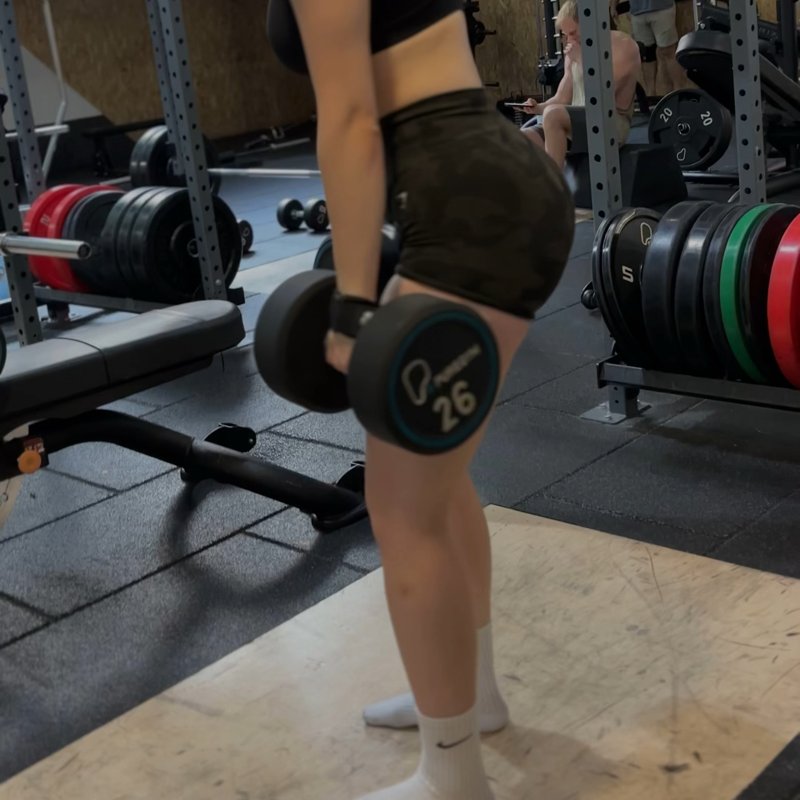
Log in to watch video demonstrations
Login to Watch3 video demonstrations available
Find more video demonstrations in the Gravitus app
Tips from the Community
-

More bend in the knee for more glute bias!
Track your progress with Gravitus
Download Gravitus to log your workouts, track your progress, and join a community of fitness enthusiasts.

Helpful Resources
One Rep Max Calculator
Find your one rep max for any exercise without maximal testing. Essential for developing effective strength training programs.
Calculate 1RMWorkout Programs
Follow structured workout programs created by fitness professionals to maximize your strength and muscle gains.
View Programs